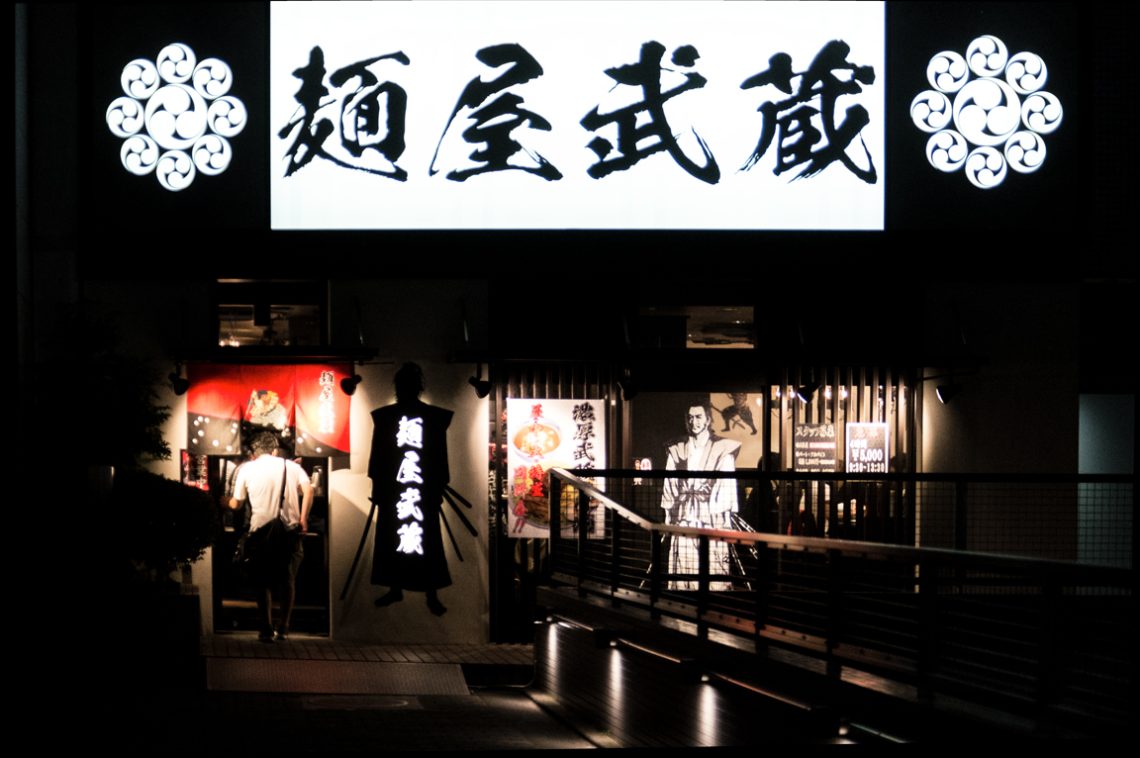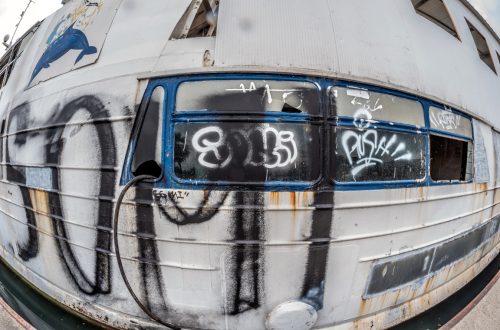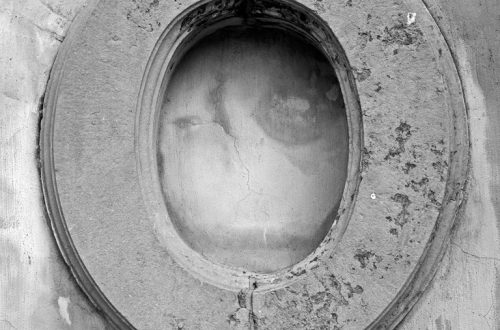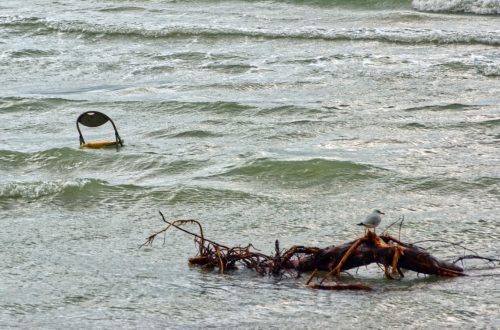
Restaurant or Killing House?
Taken in Tokyo, this photograph shows the façade of Musashi, a ramen restaurant, but the presentation is far from the warm, inviting atmosphere one might expect from an eatery. At night, under the glare of its signage, the scene takes on an ambiguous mood. The bold kanji, stark in black against an overexposed white panel, dominate the frame’s upper third, flanked by circular emblems. Below, the silhouette of a swordsman — rendered in cut-out form with glowing characters down the centre — adds an almost cinematic tension, more reminiscent of a samurai film poster than a dinner venue.
From a compositional standpoint, the frame is split into strong horizontal bands: the luminous sign above, the shadowed midsection with the door and window displays, and the dark foreground walkway. The eye naturally descends from the brilliant signage to the human presence — a man in shorts and T-shirt entering on the left, dwarfed by the towering figure of the silhouetted warrior. This juxtaposition creates an odd, almost theatrical dissonance.
Technically, the exposure pushes the limits of dynamic range. The sign is slightly overblown, sacrificing detail in favour of maintaining the surrounding shadows, yet this contrast reinforces the high-drama aesthetic. The darker areas are handled carefully enough to preserve hints of texture — the wooden slats, the posters, the faint reflection off the ramp railing. Focus is well controlled across the frame, keeping both the foreground figure and the background illustrations legible.
The lighting, entirely from artificial sources, delivers hard contrasts and deep blacks, which contribute to the photograph’s ambiguous tone: is this a welcoming entrance, or the prelude to something far less benign? By resisting the urge to balance exposure for a softer mood, the image leans into its noir-like tension, letting viewers decide whether they’re looking at a dinner invitation or a scene from a modern-day chanbara.




